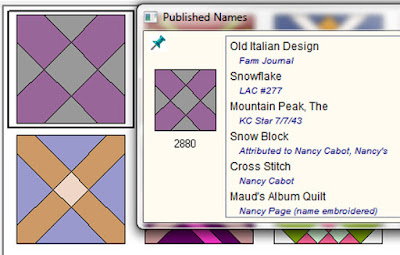Antebellum Album, Block # 8, Southern Cross
by Becky Brown
Martha, known as Mittie, in her early 20s.
The second Martha Stewart Bulloch was born on a hot July day in 1835 in Hartford, Connecticut and died almost fifty years later in New York City but Mittie always considered herself a Southerner. The accident of Northern birth was due to her family's need to escape Summer Fever, mosquito-borne diseases that plagued the low-lying South.
The Bullochs' winters were lived at Bulloch Hall
in Roswell, Georgia, which they considered their
true home.
The first Martha Stewart Elliott Bulloch (1799-1864)
Mittie's family, like many rich Southrons, spent the months from May till the first hard freeze in the North. Her mother, another Martha Stewart Bulloch, enrolled her older children and stepchildren in Hartford schools while awaiting the baby's birth. Mittie's teenage stepsisters Susan and Georgia attended the Hartford Female Seminary founded in 1823 by Catherine and Mary Beecher.
The Hartford Female Seminary on Pratt Street
By the time the Elliott/Bullochs enrolled, the Beechers had moved west but the Hartford school continued Catherine's educational innovations including calisthenics---to the horror of those who were convinced women were too delicate for exercise.
A major consequence of straddling two cultures is watching one's children choose foreign spouses. Each of Martha Bulloch's sons-in-law was a Northerner. Susan married a Philadelphian and Mittie and her younger sister married New Yorkers.
Students and teachers from an unknown school about 1860
Martha sold Bulloch Hall after her husband's death and moved in with her daughters' families, spending a year in Philadelphia. After 1856 she lived the rest of her life in New York City with Mittie and husband Theodore Roosevelt.
Roosevelt family's New York brownstone
Mittie's son, future president Theodore II, recalled the Southern culture of his New York youth
"My mother, [Mittie] Bulloch, was a sweet, gracious, beautiful Southern woman, a delightful companion and beloved by everybody. She was entirely 'unreconstructed' to the day of her death. Her mother, my grandmother, one of the dearest of old ladies, lived with us, and was distinctly over-indulgent to us children....."
My mother's sister lived with us. She was as devoted to us children as was my mother herself, and we were equally devoted to her in return. She taught us our lessons while we were little. She and my mother used to entertain us by the hour with tales of life on the Georgia plantations; of hunting fox, deer, and wildcat; of the long-tailed driving horses, Boone and Crockett... She knew all the 'Br'er Rabbit' stories, and I was brought up on them. "
Block from a Connecticut album
Quilt attributed to Emogen Hays Green.
Found in the Connecticut Quilt Project.
The half-star blocks make a nice edge.
Proportions vary. BlockBase #2880 seems to fit
the block in the quilt above.
First published by Godey's Lady's Book in
1860 but not given a name.
Read a post about the block here:
http://barbarabrackman.blogspot.com/2016/03/a-new-england-quilt-from-along-old.html
Quilt belonging to Old Woodbury House in Connecticut in
1850s colors that look quite contemporary today.
Southern Cross by Denniele Bohannon
This is BlockBase #2881.
Cutting a 12" Block
A - Cut 4 rectangles 3-3/8" wide by 8" long. You will trim these when the block is pieced.
B - Cut 1 square 9-1/4". Cut into 4 triangles with 2 diagonal cuts. You need 4 triangles.
C - Cut 1 square 3-3/8".
Trim the edges to fit the square.
Southern Cross by Denniele Bohannon
Set of four pieced blocks in the top row of an applique
extravaganza dated 1846 from the Oxford Female Seminary in Pennsylvania.
Collection of the Chester County Historical Society.
A Sentiment for August
Roses from an 1848 New Jersey quilt
Southern Cross by Pat Styring
During the War & After
Civil War could have torn the family apart but the Bullochs and the Roosevelts stuck together despite their differences. Once the War began:
"Mrs. Bulloch says she is true to the South, but her daughters have both married Northern gentlemen and she is obliged to stay where they are. The gentlemen I hear, say they will not fight against the South."
Martha's stepson James Dunwoody Bulloch and son Irvine Stephens Bulloch.
A third son Daniel Stewart Elliott died after leaving the
Confederate Army in 1862.
Mittie's husband Theodore Roosevelt the first did not enlist in the Union Army but served as a non-combatant in other ways. In New York mother Martha Bulloch suffered from worry about sons and stepsons in the Confederacy. She and the Mittie "conspired to do all they could to help Southerners," according to biographer Betty Boyd Caroli, shipping supplies to Georgia via Caribbean ports. Not the only New Yorkers with Confederate sympathies, they had some success raising money for aid to the rebels.
Teddy Roosevelt recalled:
"I grew to have a partial but alert understanding of the fact that the family were not one in their views about that conflict, my father being a strong Lincoln Republican; and once, when I felt that I had been wronged by maternal discipline during the day, I attempted a partial vengeance by praying with loud fervor for the success of the Union arms, when we all came to say our prayers before my mother in the evening....she was too much amused to punish me; but I was warned not to repeat the offense."
Southern Cross by Mark Lauer
Lincoln's funeral procession passes a Roosevelt house in
New York City, 1865. The boys watching from the second story
window are 7-year-old Theodore II and his brother Elliott.
Martha Bulloch died during the war in 1864 and is buried in Brooklyn's Greenwood
Cemetery. She was the grandmother of President Theodore Roosevelt
and great-grandmother of Eleanor Roosevelt.
Roswell's Bulloch Hall is home to
an annual show of recent quilts.
Betty Boyd Caroli, The Roosevelt Women: A Portrait In Five Generations.
The Bulloch Belles: Three First Ladies, a Spy, a President's Mother By Walter E. Wilson
A preview:
https://books.google.com/books?id=-zGSCgAAQBAJ&pg=PA141&lpg=PA141&dq=susan+elliott+west+philadelphia&source=bl&ots=3ROJPb6Qpj&sig=q2ioT3tIfsW5BoHM-1w5Y5D7WIo&hl=en&sa=X&ved=0ahUKEwjVq6rK09DWAhVC4CYKHUbgBWUQ6AEIWTAL#v=onepage&q=susan%20elliott%20west%20philadelphia&f=false


















































